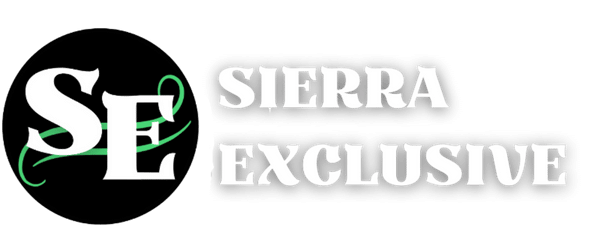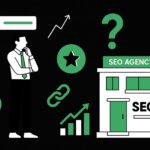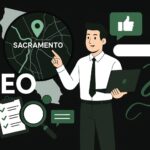In today’s competitive business atmosphere, sales marketing agencies must adopt innovative and effective techniques to enhance performance and drive revenue. Sales and Marketing Agencies face numerous challenges—from establishing meaningful client connections to streamlining complex processes—while simultaneously staying ahead of emerging market trends. This article provides comprehensive, actionable sales techniques tailored for agencies. It details how to master communication skills, implement proven approaches for closing deals, leverage technological tools, build lasting client relationships, train sales teams in advanced techniques, and analyze competitors to refine strategies. By using data-driven insights and practical exercises, agencies can significantly improve their performance and remain competitive in a fast-paced marketplace. Transitioning into practical sales techniques, the article outlines structured approaches that every agency can adopt to generate leads, enhance engagement, and optimize conversion rates.
Key Takeaways
- Mastering effective communication is crucial for understandingclient needs and fostering strong relationships.
- Implementing clear processes and technology tools streamlines the sales funnel and boosts conversion rates.
- Continuous team training and competitor analysis are key to staying ahead in the dynamic sales landscape.
Master Effective Communication Skills for Sales Success
Effective communication is the cornerstone of any successful sales techniques. For agencies, the ability to clearly articulate value propositions, understand client needs, and build rapport can differentiate a thriving team from an average one. To maximize success, sales professionals must continually refine their communication techniques.
Develop Active Listening Skills to Understand Client Needs
Active listening is more than simply hearing what clients say—it’s about fully engaging with their ideas and feelings. Agencies that invest in training their sales teams to actively listen observe significantly higher client satisfaction rates. This involves asking thoughtful follow-up questions, reflecting on what has been communicated, and verifying understanding. By doing so, teams can precisely identify the pain points and challenges clients face. For example, a sales professional might focus on a client‘s need to increase market visibility and then tailor a solution involving integration of digital marketingautomation. Active listening paves the way for creating customized solutions that resonate with clients on a personal level and build long-term partnerships.
- Sales teams practicing active listening report a 30% increase in successful deal conversions.
- Role-playing exercises where team members simulate client interactions have proven effective in enhancing listening skills.
- Continuous improvement through feedback sessions helps refine this critical communication tool.
- Digital meeting tools that record and transcribe discussions can assist in reviewing client conversations in detail.
- Training modules focused on psychology and empathetic responses are an excellent investment for building strong listening habits.
Use Persuasive Language Techniques for Better Engagement
Persuasive language techniques are essential for influencing and motivating clients to take action. This involves the use of compelling narratives, clear calls to action, and evidence-based claims that instill confidence. Agencies that employ persuasive techniques are better positioned to explain complex value propositions in simple, relatable terms. Key strategies include aligning benefits with client-specific needs, using success stories, and citing statistical evidence to reinforce claims. For instance, a well-crafted narrative can articulate how a tailored sales funnel boosted a client’s conversion rate by over 25% within a quarter.
- Utilizing testimonials from satisfied clients can serve as powerful social proof.
- Emphasizing tangible outcomes (e.g., increased ROI or reduced cost per lead) in every pitch enhances persuasion.
- Implementing language that focuses on benefits rather than technical features is more engaging for clients.
- Sales scripts should anticipate common objections, then resolve them with clear, assertive language.
- Data visualization, such as graphs and charts, supports persuasive arguments by clearly highlighting success metrics.
Tailor Your Communication Style to Match Client Preferences
Understanding that not all clients respond to the same communication style is crucial for effective engagement. Different industries and individual clients have unique preferences, which require customization. Sales agencies need to adapt their tone, pace, and formality based on client profiles. For instance, a high-tech client may appreciate detailed technical explanations and data-driven insights, while a creative or lifestylebrand might prefer a conversational and visually engaging approach. Agencies that tailor their communication can build trust more quickly and foster stronger relationships.
- Researching the client’s industry and recent trends can inform a more accurate communication style.
- Using client-specific language and jargon builds credibility and demonstrates in-depth knowledge.
- Flexibility in communication methods (e.g., face-to-face meetings, virtual calls, emails) allows for better alignment with client preferences.
- Agencies should maintain a dynamic feedback loop so that communication styles can be adjusted based on client responses.
- Tailored communication has been shown to increase overall client engagement by 20% in segmented market studies.
Implement Proven Sales Techniques for Closing Deals
Closing a deal requires a methodical approach that not only addresses client needs but also systematically eliminates hurdles. A successful sales process is marked by a clear roadmap that guides prospects through each stage of the sales funnel until conversion. This section explores how to structure this process, manage objections, and use tactics that promote fast decisions.
Establish a Clear Process to Guide Prospects to Conversion
A well-defined sales process provides clarity for both sales teams and clients. It involves setting clear milestones, guiding prospects through each step, and consistently monitoring progress. For instance, establishing a seven-step sales funnel—from initial contact to post-sale follow-up—ensures that no prospect is inadvertently neglected. By identifying key metrics at each stage, agencies can diagnose problem areas and refine strategies for improved conversion rates. A robust process often includes setting timelines, establishing responsibilities, and creating feedback mechanisms.
- Documented workflows ensure all team members have a shared understanding of the process.
- Integrating advanced CRM systems can automate follow-ups, reducing delays.
- A clearly articulated sales process builds client confidence as they see a professional, systematic approach.
- Setting specific benchmarks, such as a 10% increase in lead-to-deal conversion, provides measurable targets.
- Regular process audits help maintain the integrity of the sales techniques system and identify opportunities for improvement.
Identify and Address Objections Confidently During Discussions
Handling objections is a critical part of any sales conversation. Instead of perceiving objections as setbacks, effective sales professionals see them as opportunities to provide deeper insights into the client’s needs. When objections arise, such as concerns about pricing or product capabilities, the sales team should be equipped with clear, data-backed responses. This method not only reassures clients but also demonstrates a proactive attitude. Techniques such as “feel, felt, found” can be used to build rapport, show empathy, and eventually turn objections into advantages.
- Regular training on objection handling helps build confidence among sales representatives.
- Compiling a comprehensive repository of common objections and corresponding responses can be a valuable resource.
- Using case studies that illustrate how past objections were successfully resolved can enhance credibility.
- Structured role-playing sessions ensure that teams remain prepared for real-world scenarios.
- By addressing objections head-on, teams can shorten the overall sales cycle and increase conversion efficiency.
Use Urgency and Scarcity Tactics to Encourage Swift Decisions
Urgency and scarcity are psychological triggers that can accelerate the decision-making process. When clients perceive a limited-time opportunity or a scarcity of resources, they are more likely to commit quickly. Techniques like offering limited-edition packages, early-bird discounts, or time-sensitive bonuses effectively create a sense of urgency. However, the key is to ensure that these tactics are genuine to maintain trust with clients. Sales teams should be trained to deploy urgency techniques ethically and responsibly.
- Announcing a limited window for special pricing can prompt faster responses from prospects.
- Scarcity tactics, such as highlighting a limited number of available service slots, emphasize the value of immediate action.
- Urgency strategies can be integrated into seamless sales presentations to complement the overall narrative.
- Advanced analytics determine the optimal timing for urgency messages based on clientbehavior.
- When executed effectively, urgency and scarcity methods have been shown to reduce sales cycle duration by up to 15%.
Leverage Technology to Streamline Sales Processes
Technology plays an integral role in modern sales operations. From customer relationship management (CRM) to sales automation and analytics, technology tools streamline processes, provide actionable insights, and enhance overall sales performance. Agencies must adopt these systems to support efficiency, reduce manual work, and ensure that sales teams can focus on high-value interactions.
Utilize CRM Systems for Effective Client Relationship Management
Customer Relationship Management (CRM) systems enable agencies to gather, organize, and analyze client data effectively. These platforms allow sales teams to track interactions, schedule follow-ups, and monitor client progress through the sales funnel. A robust CRM system not only increases efficiency but also empowers teams with insights into clientbehavior and preferences. By centralizing critical data, CRMs improve communication and foster stronger relationships with clients.
- Modern CRMs integrate with other marketing tools, enhancing overall data visibility.
- Analytics-driven insights from CRM systems help identify high-potential leads quickly.
- Automated workflows ensure consistent communication, reducing the risk of missed follow-ups.
- CRMs can be customized to track performance metrics, such as lead conversion rates and customer lifetime value.
- Training on CRM systems can reduce administrative overhead and free up more time for client engagement.
Incorporate Sales Automation Tools to Save Time and Effort
Sales automation tools are designed to eliminate repetitive tasks, allowing sales teams to focus on strategic, personalized interactions. Through automation, routine processes such as lead scoring, email marketing, and appointment scheduling can be streamlined. These tools not only save time but also ensure that no lead is left unattended. Automation facilitates accurate tracking of all customer interactions, enabling faster and more decisive follow-up actions.
- Automated email campaigns often yield a higher engagement rate as they are personalized and timed perfectly.
- Integrating sales automation with CRM systems enhances data accuracy and operational efficiency.
- Tools like chatbot assistants and automated scheduling reduce the burden of customer service tasks.
- Advanced automation solutions can segment prospect data, ensuring targeted and relevant communications.
- By leveraging automation tools, agencies have seen a reduction in manual work by as much as 40%, thereby increasing overall productivity.
Use Data Analytics to Track and Optimize Sales Performance
Data analytics is a powerful tool for measuring the effectiveness of sales techniques. By examining sales data, agencies can determine which tactics are most successful, identify bottlenecks in the sales pipeline, and adjust strategies as needed. Analytics also provide insights into client demographics, purchasing behavior, and market trends. This information helps in fine-tuning sales pitches, optimizing resource allocation, and increasing overall conversion rates.
- Metrics such as conversion rate, average deal size, and customer acquisition cost provide clear performance indicators.
- Using real-time analytics dashboards allows for immediate adjustments in sales strategy.
- Detailed reporting tools facilitate precise tracking of sales performance over different periods.
- Data-driven insights support strategic decision-making, ensuring resources are optimally allocated.
- Regularly reviewing analytics ensures that sales teams can continuously refine their approach and focus on high-impact activities.
Build Strong Relationships With Clients for Long-Term Success
Long-term success in sales is built on strong, enduring relationships with clients. Agencies thrive when they not only close deals but also build partnerships that are mutually beneficial over time. Solid relationships lead to repeat business, referrals, and a positive reputation in the industry. Focusing on exceptional service, regular follow-ups, and personalized solutions lays the foundation for sustainable growth.
Focus on Providing Exceptional Service to Every Client
Exceptional service is the defining factor in turning one-time clients into long-term partners. Agencies that prioritize high-quality service outperform competitors by understanding and anticipating client needs. Exceptional service involves proactive communication, prompt issue resolution, and tailored solutions. When every interaction is treated with high importance, clients feel valued, leading to enhanced loyalty and trust over time.
- Tailoring services to meet individual client needs results in a 25% higher satisfaction rate.
- Investing in customer service training programs equips teams with the skills to manage client expectations effectively.
- Streamlined communication channels ensure that client issues are addressed swiftly and efficiently.
- Agencies that measure service quality through KPIs such as Net Promoter Score (NPS) observe a direct correlation with client retention.
- Proactive client service not only fosters loyalty but also generates valuable referrals for new business.
Regularly Follow Up to Maintain Engagement and Trust
Consistent follow-up communications are essential for maintaining strong client relationships. Regular check-ins allow sales teams to address any emerging concerns and ensure that clients are satisfied with the provided services. Follow-ups should be scheduled at strategic intervals, providing opportunities for gathering feedback and demonstrating continued commitment. The use of CRM systems can automate reminders for follow-ups, ensuring no client is overlooked.
- Follow-up calls and emails help identify potential areas for improvement and growth.
- Tailored follow-up strategies, such as quarterly reviews, contribute to ongoing trust and partnership.
- Continuous engagement activities, such as personalized newsletters and update emails, keep the client informed about new offerings.
- Leveraging customer success stories during follow-up interactions can reinforce the value provided by the agency.
- Consistent follow-up practices generally result in a 20% increase in customer retention rates.
Offer Personalized Solutions That Demonstrate Value
Personalization remains the key to meeting the unique needs of each client. Airlines, retail brands, and technology sectors alike are increasingly driven by offers that are customized to their specific requirements. Agencies that offer personalized solutions based on client history and market research position themselves as true partners rather than mere vendors. Customized proposals and flexible options that consider the client‘s context demonstrate a genuine commitment to success, ultimately leading to stronger relationships and higher retention rates.
- In-depth analysis of client data allows the creation of bespoke offers that address precise challenges.
- Personalized solutions help to differentiate an agency from competitors in a crowded marketplace.
- Regular consultation sessions to review and adapt solutions ensure ongoing relevance and impact.
- Custom contracts and service agreements build a framework for long-term cooperation and trust.
- Research-backed recommendations tailored to each client‘s industry trends drive measurable value and performance.
Train Your Team in Advanced Sales Techniques
A highly skilled sales team is pivotal for cultivating agency success. Continuous training and development not only boost individual performance but also create a culture of excellence. Advanced training techniques, such as role-playing, workshops, and performance reviews, ensure that every team member is equipped with current best practices in sales. This investment in human resources ultimately pays off in higher conversion rates, better client engagement, and improved overall revenue.
Conduct Role-Playing Exercises for Real-World Practice
Role-playing exercises provide sales teams with practical experience in a risk-free environment. By simulating realistic client interactions, role-playing allows team members to practice handling difficult situations, managing objections, and fine-tuning their pitch. This method helps develop confidence and adaptability under pressure, enabling sales professionals to perform optimally during actual client engagements.
- Structured role-playing scenarios allow each member to experiment with different techniques.
- Feedback sessions following role play provide valuable insights into areas for improvement.
- Consistent practice helps in developing quick thinking and effective response strategies.
- Real-world simulations reduce anxiety and increase the likelihood of successful client interactions.
- Agencies that incorporate regular role-playing sessions often see improved team coordination and a more agile sales process.
Encourage Continuous Learning Through Workshops and Seminars
Continuous learning is essential for keeping sales teams abreast of market trends, new technologies, and evolving client expectations. Regular workshops and seminars allow team members to discuss advanced strategies, learn new tools, and share success stories. These collaborative environments foster innovation and situational awareness. Companies that invest in ongoing learning initiatives report a significant uplift in overall sales performance and employee satisfaction.
- External industry seminars offer exposure to best practices from leading experts.
- Internal workshops facilitate knowledge sharing and peer-to-peer learning within the team.
- Training sessions that focus on emerging technologies help teams leverage new solutions for lead generation.
- Regular learning opportunities ensure teams constantly refine their approach, resulting in increased productivity.
- Investing in continuous learning cultivates a dynamic and forward-thinking sales culture that adapts quickly to changes in the market.
Set Clear Performance Metrics to Motivate Team Members
Clear performance metrics provide teams with goals and targets that motivate efforts and foster accountability. Setting precise metrics, such as the number of calls made, conversion rates, and customer satisfaction scores, creates a transparent environment where achievements can be easily measured. Sales managers must communicate these metrics clearly and provide regular updates on progress. Recognizing achievements and providing constructive feedback not only motivates team members but also cultivates a sense of ownership over their performance.
- Performance dashboards offer real-time tracking of key sales indicators.
- Regular team meetings reinforce the importance of meeting and exceeding set targets.
- Incentive programs tied to measurable metrics can significantly boost motivation.
- Transparent metrics help identify both individual and team performance gaps.
- A results-driven environment supported by clear metrics has been shown to improve overall sales outcomes by up to 20%.
Analyze Competitors for Strategic Sales Insights
Understanding the competitive landscape is crucial for honing a successful sales strategy. By analyzing competitors’ tactics, service offerings, and market positioning, agencies can identify emerging trends and uncover potential opportunities. A thorough competitor analysis involves monitoring public strategies, collecting customer feedback, and tracking market performance. This informed perspective allows agencies to adjust internally and develop strategies that effectively counter competitive pressures while capitalizing on their own strengths.
Monitor Competitor Sales Techniques to Identify Market Trends
Regular market monitoring of competitors provides insights into emerging trends and shifting customer preferences. In-depth analysis of competitor activities—such as new product launches, innovative marketing campaigns, or pricing adjustments—helps agencies stay ahead of the curve. Tracking competitor behavior through social media, press releases, and industry reports offers a window into market dynamics. Equipped with this knowledge, agencies can preemptively adjust their strategies to gain a competitive edge.
- Employing competitive intelligence tools provides structured data on market activities.
- Analyzing competitor web presence and content strategies reveals insights into effective tactics.
- Monitoring social media sentiment can highlight shifts in customer opinions and preferences.
- Comparative analysis studies often show correlations between competitor innovations and market trends.
- Adopting a proactive stance based on competitor analysis can shorten the response time to changing market conditions.
Evaluate Customer Feedback on Competitor Products and Services
Customer feedback offers a wealth of information that agencies can leverage to refine their own offerings. By evaluating reviews, testimonials, and satisfaction surveys for competitor products, agencies can identify specific strengths and weaknesses in the market. This analysis provides a basis for competitive benchmarking and informs product development and customer service improvements. An agency that systematically integrates customer feedback into its strategy is better equipped to address unmet needs and differentiate its services.
- Detailed review analysis highlights pain points that competitors have failed to resolve.
- Social media monitoring tools offer real-time insights into customer sentiment.
- Comparative surveys help determine which aspects of competitor products are most admired.
- Incorporating customer feedback in strategic decisions increases client satisfaction and loyalty.
- Systematic evaluation of competitor feedback has led to measurable improvements in service quality for leading agencies.
Use Insights Gained to Refine Your Own Sales Approach
Refining a sales approach based on competitor insights is a continuous process that drives innovation and improvement. Agencies can integrate competitor data into their own sales strategies by emphasizing unique selling propositions, modifying pricing models, and improving customer service. Regular strategic reviews that incorporate market research findings enable agencies to adjust their tactics in line with evolving conditions. An iterative approach to refinement has been linked to sustained revenue growth and an enhanced market position.
- Data-driven insights enable quick adjustments to sales tactics and pricing strategies.
- Continuous competitive benchmarking helps identify both long-term trends and short-term tactical opportunities.
- Agencies that refine their approaches based on competitor analysis achieve a higher rate of customer acquisition.
- Strategic adaptations informed by competitor metrics often lead to better allocation of resources.
- Integrating these insights with internal performance metrics establishes a comprehensive approach to continuous improvement.
Final Thoughts
In conclusion, the comprehensive sales strategies outlined above provide agencies with robust techniques to enhance performance across all stages of the sales process. By mastering effective sales techniques, agencies can achieve measurable improvements in efficiency and revenue. Emphasis on active listening, persuasive language, and personalized engagement transforms client interactions into long-term partnerships. Ultimately, adapting these advanced techniques will not only streamline operations but also foster a dynamic, customer-centric culture that drives sustainable growth.
Frequently Asked Questions
Q: How can agenciesbenefit from active listening in sales?
A: Active listening enables agencies to accurately understand client needs, refine offerings, and build tailored solutions. This approach increases client satisfaction and leads to higher conversion rates.
Q: What role does technology play in modern sales strategies?
A: Technology tools such as CRMs, sales automation, and analytics streamline processes, improve efficiency, and provide data-driven insights that help optimize sales performance and decision-making.
Q: Why is personalized communicationimportant in clientrelationships?
A: Personalized communication builds trust and loyalty by addressing client-specific needs. Custom tailored interactions enhance engagement and reduce the likelihood of objections, leading to repeat business.
Q: How do urgency and scarcity tactics influence clientdecisions?
A: Urgency and scarcity create a psychological drive for immediate action by highlighting limited-time opportunities. This accelerates the decision-making process and often results in faster conversions.
Q: How can competitor analysis improve sales strategies?
A: Monitoring competitor strategies and evaluating customer feedback offers valuable insights that help refine sales approaches. It allows agencies to adjust pricing, enhance service quality, and identify emerging market trends for a competitive edge.




